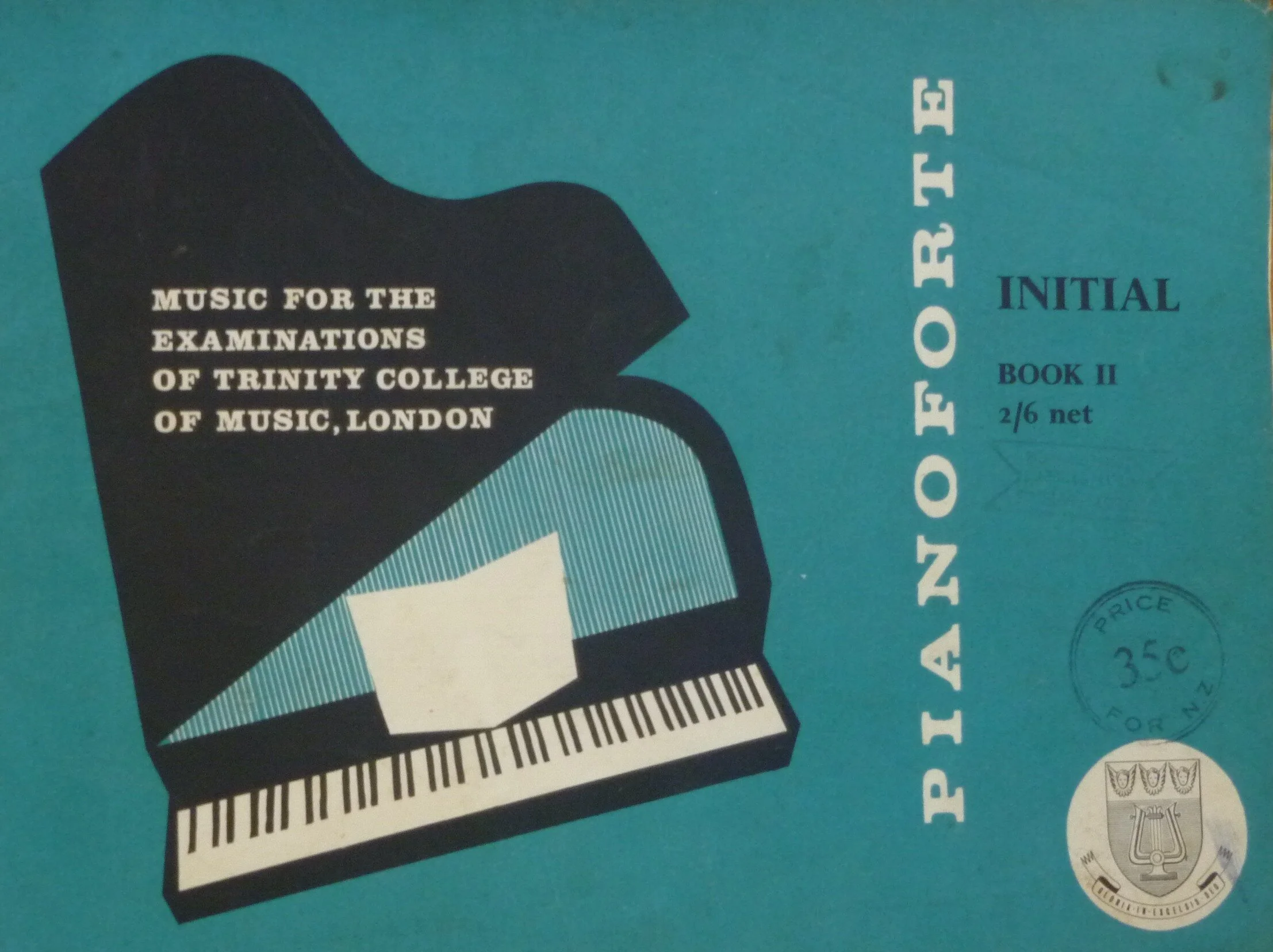Recently I located two small Trinity College examination books for the Initial Grade. I have no idea how old they are as there is no date printed on them and there is very little reference to them online. It could have been sold in New Zealand after 1967 (the introduction of decimal currency), as there seems to have been a sticker over the one that would have been for the UK. The Initial Examination book has a price of 35c stamped on it.
The Sight-reading book contains twelve pieces and these were composed by John Longmire. At the beginning he talks about reading notes by interval. It is stated that the Sight-reading test in the Initial piano examination has a total of eight bars, uses the treble and bass staves with single notes in a five-finger position using notes of minims and semibreves. There are pieces in the book that extend beyond the standard that is required for the Initial examination.
The following is from the British Music Collection website - ’John Longmire (1902 – 1986) was born in Gainsborough, Lincolnshire. He began learning the piano at an early age, and in 1909 joined the choir of the Parish Church. It was here that, at the age of seventeen, he became an articled pupil of Alan Stephenson with whom he studied piano, singing and composition. In 1923 Longmire entered the Royal College of Music as a Gervase Elwes Memorial scholar. His principal piano teacher was Arthur Alexander, who introduced Longmire to John Ireland, initiating a life-long friendship, with Longmire producing in 1969 his book “John Ireland – Portrait of a Friend”. From his student days Longmire showed a deep interest in music education, both of children and adults. Piano, song and operetta compositions for the young would occupy him for most of the rest of his life, apart from the years of World War 2 when he became a schoolmaster. His interest in adult education occupied him from 1928 for ten or so years after he joined the staff of the Bec Literary Institute, where he taught with conspicuous success. It was, however, as a widely published composer of piano pieces and songs for children that Longmire acquired his reputation as a master of his craft. An accomplished miniaturist, his imaginative genius was apparent in his earliest published collection (Nine Insect Pieces [1925]). After a stint of teaching in New Zealand (1951-1955) Longmire settled on Guernsey, where his name lives on in two prizes awarded annually in the island’s Eisteddfod’.
The Initial examination book has a set of exercises at the beginning and the candidate is told ‘that the examiner will look for a good and quiet position of the hand and arm, correct action of fingers and thumb, with fingering and other marks carefully observed’. There are exercises for legato, staccato and phrasing. Following these exercises there arethree pieces (the candidate only has to play two of them) and again the candidate is advised to ‘be accurate in their notes, time and pace, to observe rests and expression marks and to attend to fingering and phrasing’. The pieces all have titles and these are - Echo Piece, The Cuckoo and Valsette’.

